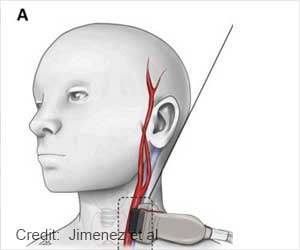Oregon Health & Science University researchers have identified a mechanism by which they believe a protein complex in the kidney operates as a master switch that regulates blood pressure.
Oregon Health & Science University researchers have identified a mechanism by which they believe a protein complex in the kidney operates as a master switch that regulates blood pressure. Dr. David H. Ellison, who led the research team, says that the new finding has broad implications for the treatment of more common forms of hypertension.
He likens the switch to a rheostat that modulates the balance of salt and potassium in the kidney, thereby raising or lowering blood pressure. Writing about his team’s findings in the Journal of Clinical Investigation, Dr. Ellison said that hypertension occurs when the switch malfunctions, as it does when certain mutations in the WNK kinase protein complex are present.He believes that once their findings are confirmed in further research, they can lead to better targeted and more effective drugs for the disease. “It is not widely understood by the general public that hypertension is most often a kidney disease. If we can figure out the ways the kidney adjusts salt excretion, we can devise methods to prevent hypertension, cure it or design better treatments for it. Our findings in this study get us a step closer, we think,” he said.
The researchers say that they have found out how a hormone called aldosterone, produced in the adrenal gland, can have different effects on sodium and potassium balance at different times. The hormone sometimes increases salt absorption and at other times increases potassium excretion, but how it knows which role to play has been a mystery.
“We think the answer is the WNK kinases, which switch aldosterone from a sodium chloride (salt) -retaining hormone to a potassium-wasting hormone,” said Ellison. “When you inherit a mutation in one of the WNK kinases the switch gets turned in the wrong direction. The switching mechanism explains for the first time why eating a high potassium diet lowers blood pressure. High potassium not only stimulates aldosterone secretion but also modulates WNK kinase activity; together aldosterone and certain WNK kinases cause the kidney to rid itself of potassium rather than reabsorbing salt,” he added.
The researchers also say that their study breaks new ground in refining the explanation of how WNK mutations cause a disease called familial hyperkalemic hypertension (FHHt), also known as Gordon’s syndrome.
“We showed that the way the mutations cause the disease is with the participation of WNK3. Unlike WNK4, which inhibits NCC, the salt cotransporter, WNK3 has a stimulative effect. If there’s more WNK3, you’ll have more salt reabsorption, and if there’s more WNK4, you’ll have less. What also happens is that WNK4 normally inhibits WNK3, but mutant WNK4 blocks this effect, thereby generating more active WNK3, increasing salt transport and causing the disease,” said Ellison.
Advertisement
LIN/V











